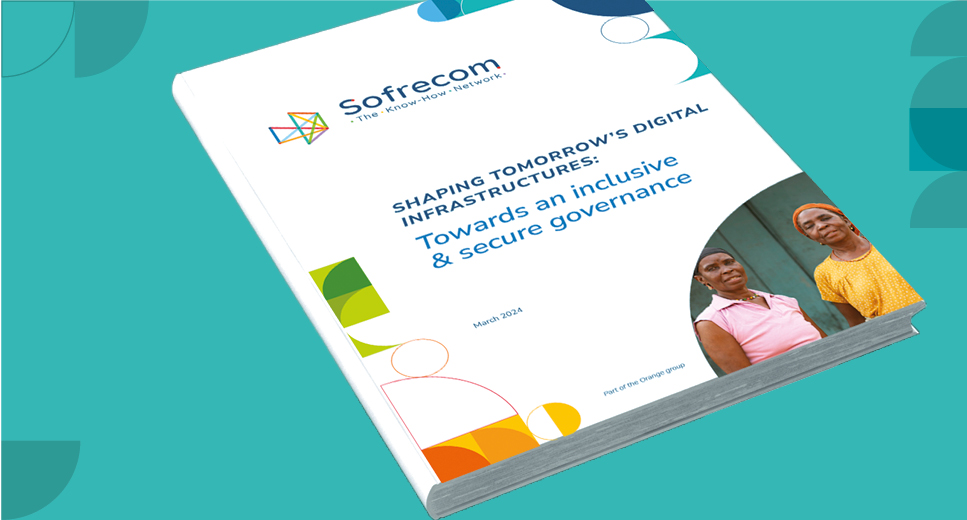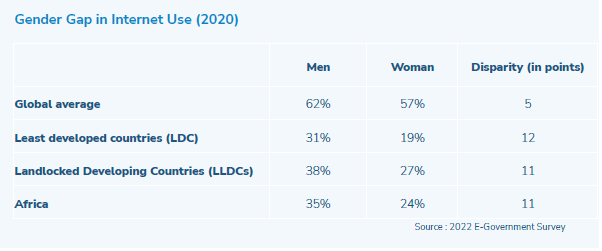
If the dematerialization of population identification and the acceleration of e-administration contribute to the inclusion of a majority of citizens, they also exclude a portion. Indeed, the multiplying conflicts have further marginalized the impoverished illiterate who live far from the digital world, and their numbers have increased.

E-administration has been deployed for the past 25 years. Across the globe, this trend has driven governments to establish National Digital Identity (NDI) systems. In emerging countries, NDI plays a pivotal role in fostering the social and financial inclusion of vulnerable populations. Meanwhile, in developed countries, it serves as a crucial defense against fraud. Nevertheless, amid a backdrop of multifaceted crises, one must question whether the rapid pace of digital transformation can be sustained without potentially impeding inclusion efforts.
From e-administration to digital transformation
In the late 1990s, e-administration began to emerge gradually. It leveraged information technologies to deliver more efficient public services, enhance administrative transparency, and reduce costs and public debt. With the advent of the digital revolution, the term ‘digital transformation’ has gained prominence. This transformation has become a central axis of state reform and modernization policies, aiming to provide innovative, inclusive, and sustainable digital services. It spans across all public services provided to citizens, businesses, and government agencies, promoting new socio-economic models. The COVID-19 pandemic has unequivocally accelerated this transition. Digitalization is poised to deliver roundthe-clock electronic services that are accessible to all, in line with the United Nations’ motto, «Leave no one behind.»
A foundational program for state e-transformation
In 2022, a staggering 850 million individuals, predominantly residing in Africa and Asia, continued to exist without any form of official identification. An individual devoid of identity is essentially relegated to obscurity, rendering them ‘invisible’ in society. This circumstance strips many communities of their fundamental rights, impeding their access to critical services such as social welfare, education, formal employment, legal justice, financial assistance, and the fundamental right to vote, among others. The introduction of National Digital Identity (NDI) systems emerges as a promising solution to address the pervasive absence of civil registration documents.
Consequently, NDI assumes a pivotal role in orchestrating the digital transformation of countries on a global scale. However, the establishment of robust identification and authentication mechanisms poses significant challenges, particularly in the realm of biometric technology. The implementation process and enrollment procedures
necessitate a robust legal framework, ensuring comprehensive data protection measures, proficient implementation capabilities, and the seamless operation of technological infrastructures to uphold the security and interoperability of the solution.
Despite the technical, political, or economic challenges countries face, all governments view NDI as a catalyst for economic development and social, civic, and financial inclusion.
A powerful driver of inclusion in emerging countries
In emerging countries, the World Bank’s ID4D initiative assists governments in establishing more robust and inclusive identification systems through analysis, assessments, and funding. Several programs are thus unfolding under the auspices of the United Nations, particularly in Sub-Saharan Africa, fundamentally transforming the
lives of vulnerable populations. Take, for instance, Bangladesh, where a financial inclusion program has enabled various segments of the population to access social benefits previously out of reach. This includes rural dwellers, elderly individuals, widowed and destitute women, and financially insolvent persons with disabilities. For the beneficiaries— 12 million Bangladeshi citizens— collecting their allowance is as simple as visiting their local information center and undergoing biometric identification with the assistance of a local agent.
Three essential and mandatory conditions are required to ensure the success of this
program:
- Connectivity— to access electronic services.
- Unique Identification (biometrics)— to verify the beneficiary’s identity.
- Human Support— to assist individuals with limited digital exposure, employing a hybrid transformation approach that incorporates both digital and human elements.
A shield against fraud: Safeguarding mature countries
Across Europe, several countries have implemented NDI strategies— France as early as 2016, along with Belgium, Sweden, Denmark, Estonia, Italy, and others. The enforcement of the European eIDAS regulation is expected to unify these diverse systems, while the establishment of a pan-European NDI portfolio will enable EU citizens to identify and authenticate themselves online without relying on commercial providers. All their private data will be consolidated within a tool managed and controlled by European institutions.
In addition to reducing costs and facilitating citizens’ access to digital services, this initiative serves as a barrier against fraud. NDI, which replaces traditional paper identity documents with a digital application, combats document fraud, identity theft, and cybercrime. It enhances security in online transactions, safeguards data privacy on the internet, and grants access to both public and private sector services including banking and financial services, health applications, social media platforms, and more. When the solution is robust and efficient, it fosters user trust in electronic transactions.
Heightened risks of exclusion
While the digitization of population identification and the acceleration of e-administration contribute to the inclusion of a majority of citizens, they also exclude some. The ongoing health crisis and escalating conflicts have further marginalized illiterate individuals who reside far from digital services, a demographic that has grown in number.
- Amidst climate urgency, political polarization, and challenges in achieving multilateralism, ongoing conflicts and forced displacements have led to an increase in poverty levels. In 2020, for the first time since 1998, the number of people living in poverty rose from approximately 119 to 124 million. Inequalities are widening, and the traditional social contract is failing many.
- The situation of young people aged 15 to 24 is also concerning. There are 1.8 billion youth globally, with nearly 90% residing in developing countries. Around 267 million of them are neither in school, nor employed, nor receiving training.
- Gender disparity is another stark reality. The 2022 United Nations E-Government Survey reveals that across all sectoral services, women are 30% to 50% less likely than men to use the internet for civic engagement.
Although NDI serves as a driver of inclusion in many states, the overall assessment remains mixed. To ensure that no one is left behind, it is imperative to engage all individuals regardless of their gender, age, abilities, and income level, and address the digital divides perpetuated by socio-economic inequalities. There remains significant work ahead across multiple domains, such as expanding information highways, deploying reliable technological solutions, fostering skill development, combating discrimination, and offering human support.







